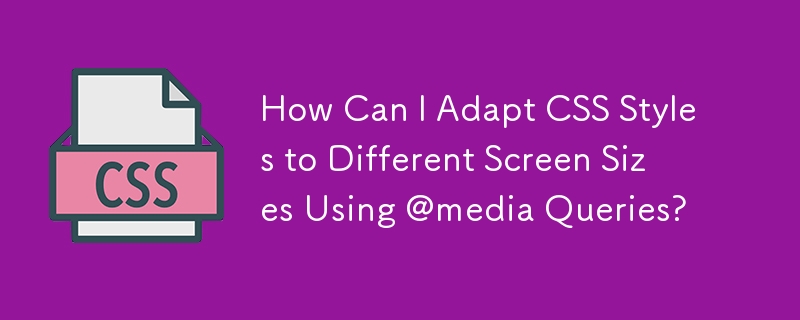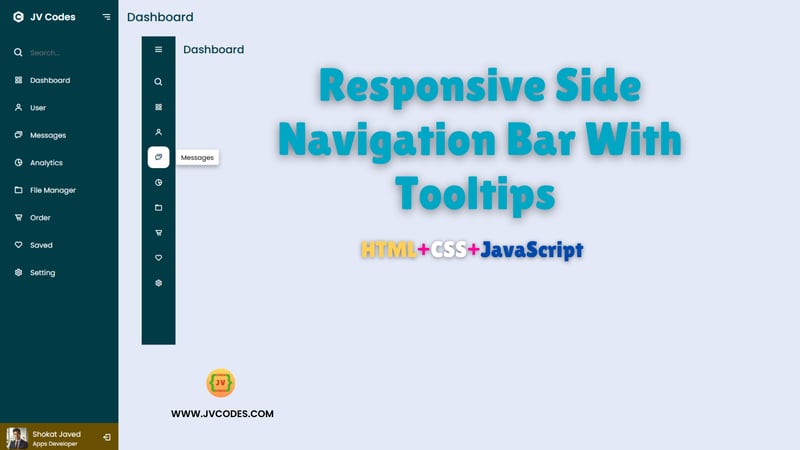Found a total of 10000 related content

HTML Responsive Images Guide
Article Introduction:This guide is about the HTML syntax for responsive images (and a little bit of CSS for good measure). We'll go over srcset and , plus a whole bunch of things to consider to help you get the best performance and design control from your image
2025-04-05
comment 0
307

Building Responsive Card Layouts with HTML and CSS Flexbox
Article Introduction:In our previous articles, we’ve explored the importance of structured HTML and how CSS Flexbox simplifies web layouts. This article builds on those concepts by bringing them together to create something practical, a responsive card layout. Think of i
2024-12-31
comment 0
602

How to create a responsive HTML email?
Article Introduction:The following methods are required to create responsive HTML messages: 1. Use inline styles to ensure compatibility; 2. Use table layout to replace Flexbox or Grid; 3. Set viewport tags, fixed-width containers, picture max-width and use table simulation buttons for mobile adaptation; 4. Previews must be tested on multiple clients and real devices. This can improve the display stability and user experience on different devices and email clients.
2025-07-10
comment 0
899

Creating responsive HTML tables using best practices.
Article Introduction:The key to making responsive HTML tables is to ensure that the content on different devices is clear and readable and has a reasonable structure. 1. Use semantic HTML tags and class names, such as, class="name", etc., to facilitate style control and JavaScript operations; 2. Optimize the display method for small screens. Common practice is to place tables into containers with overflow-x:auto to achieve horizontal scrolling, or hide secondary columns or convert them into card-style layouts; 3. You can add fixed table headers, sorting functions, search filtering and other interactions to improve user experience, and pay attention to maintaining good performance.
2025-07-03
comment 0
321

How to make an HTML page responsive
Article Introduction:The key to making responsive HTML pages is to combine CSS and media queries to automatically adapt to different screen sizes. 1. Use viewport meta tags to control mobile display: 2. Set breakpoints through media queries, such as mobile phone max-width:480px, tablet 481px-768px, desktop 769px or above; 3. Use Flexbox or Grid to achieve elastic layout; 4. Use max-width:100% to prevent overflow of containers; 5. Use mobile-first strategy to write basic styles for small screens first and then gradually enhance them. These steps can effectively improve page adaptability and avoid common problems.
2025-07-09
comment 0
131

How to make your HTML responsive for mobile devices?
Article Introduction:The key to achieving friendly display of web pages on mobile phones is the coordination of HTML and CSS. The following points should be paid attention to: 1. Set the viewportmeta tag to ensure correct rendering on the mobile side; 2. Use media query to apply styles according to different screen sizes; 3. Use flex or grid to achieve elastic layout; 4. Control the image size to adapt to different containers; 5. Use developer tools, real machines or online tools to verify the effect during testing. Every step is crucial, and omissions can affect the overall responsive experience.
2025-07-05
comment 0
659

How to create a responsive navigation bar with a hamburger menu using HTML?
Article Introduction:The key to making a responsive navigation bar is to realize the collapse function of the menu on the small screen. The core steps include: 1. Building an HTML structure, including containers, logos, links and hidden hamburger buttons; 2. Using CSS media to query and control styles under different screen sizes, hiding the menu on the mobile terminal and displaying the hamburger buttons; 3. Using JS to realize the interactive logic of click expansion and collapse. Specifically: the navigation items are displayed in HTML.nav-links, and the .hamburger button is hidden by default; the menu is set in CSS to absolutely position and hide the menu, and the hamburger button is displayed; JS controls the menu expansion and collapse by switching the .active class to ensure smooth interaction.
2025-07-05
comment 0
378


How to make an HTML responsive?
Article Introduction:The key to achieving a built-in responsive layout is to avoid fixed widths and utilize container scale. The easiest way is to set the iframe width to 100% and use the aspect-ratio attribute to control the aspect ratio, such as iframe{width:100%; aspect-ratio:16/9;}, which is suitable for modern browsers and video embedding scenarios; if IE compatible, you can use the outer div container to match the padding-top technique to achieve responsiveness by setting .iframe-container{position:relative;width:100%;padding-top:56.25%;} and absolute positioning of iframes;
2025-07-09
comment 0
183

Implementing Responsive Images using HTML Picture Element
Article Introduction:Elements are a native way to implement responsive images in HTML5. It allows the most appropriate image resources to be loaded according to factors such as the screen size, resolution, and direction of the device. Define multiple image sources and their corresponding media query conditions through tags. The browser will match and load pictures that meet the conditions in order, and finally use the tag as the default fallback. For example: when the device width is greater than or equal to 1024px, medium.jpg is loaded between 768 and 1023px, small.jpg is loaded if the device width is greater than or equal to 1024px. Compared with srcset, it provides more refined control capabilities, such as adapting to Retina screens, horizontal and vertical screen switching, completely different picture content, etc. Media checks should be set reasonably when using
2025-07-10
comment 0
426


How do I make responsive images with HTML tags?
Article Introduction:TomakeresponsiveimagesusingHTML,combineproperHTMLattributeswithbasicCSS.Startbyusingthetagwithsrc,alt,andwidthtoensureaccessibilityandpreventlayoutshifts.Avoidsettingbothwidthandheightunlesstheymatchtheimage'saspectratio.Next,addsrcsetandsizesattribu
2025-06-27
comment 0
645


Getting Started with HTML Tables
Article Introduction:HTML Forms: A Guide to Creating Responsive and Mobile-Friendly Forms
HTML tables are used to display table data on web pages. They are great for displaying information in an organized way and can be styled using CSS to match the look and style of a website. This tutorial will cover the basics of creating HTML tables and adding styles to make them responsive and mobile-friendly.
Key Points
HTML tables are powerful tools for displaying table data on web pages, and can create tables, rows, and cells using and tags.
The style setting of HTML tables can be achieved through CSS properties such as borders, fills, background colors, and media queries for different screen sizes, making them responsive and mobile-friendly.
Can be added by
2025-02-09
comment 0
347


Responsive Side Navigation Bar With Tooltips in HTML, CSS and JavaScript
Article Introduction:A responsive side navigation bar not only helps to improve the navigation of your website but also address the issue of neatly placing links that enhance the experience of users. By using tooltips, it is possible to make the users aware of functions
2024-11-07
comment 0
1196

What are the srcset and sizes html attributes for responsive images?
Article Introduction:Tobuildresponsivewebsites,developersshouldusethesrcsetandsizesHTMLattributestoserveoptimizedimagesbasedondeviceconditions.1.Thesrcsetattributeallowsdefiningmultipleimagesourceswithwidthorpixeldensitydescriptors,enablingthebrowsertoselectthemostapprop
2025-06-26
comment 0
799

Configuring the Viewport for Responsive Design with the HTML meta Tag
Article Introduction:The key to mobile adaptation is to correctly configure the viewport. 1. The viewportmeta tag is used to control the layout and scaling of web pages on mobile devices. The basic writing method is to indicate that the page width is equal to the device width and does not scale at the beginning; 2. The reason why viewport must be set is to avoid problems such as automatic reduction of the page, responsive layout failure, and poor user experience; 3. Use viewport correctly to add additional parameters such as maximum-scale=1 and user-scalable=no to limit scaling, but it should be noted that it may affect the user experience. The common practice is to only retain the basic settings to ensure the normal layout and keep the user's operation free.
2025-07-04
comment 0
510



















